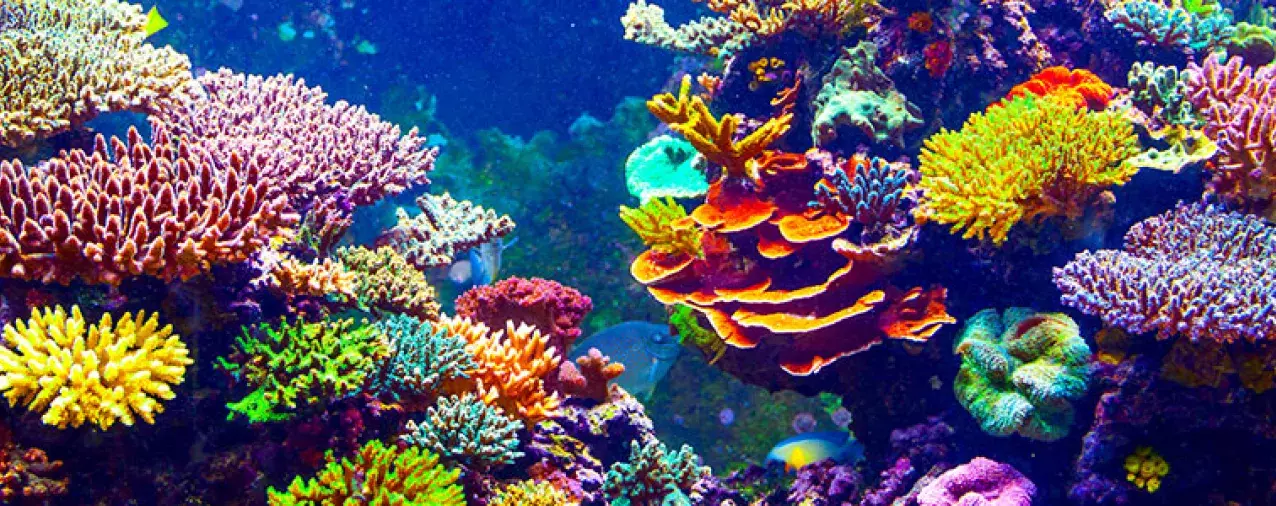Genomics: Insight

How can Stony corals resist climate change?
What is Climate Change?
From the beginning of the industrial revolution that started two hundred plus years ago, the concentration of carbon dioxide (CO2) and other greenhouse gases in the atmosphere have increased due to human actions such as burning fossil fuels (e.g. car emissions) and changing land use (e.g. deforestation).This leads to climate change: the warming up of the atmosphere and the ocean.
How does climate change affect the ocean?
The ocean and climate are inextricably linked. When these gases are absorbed by seawater, it causes changes in water temperature, ocean acidification, and deoxygenation that have an enormous impact on the ocean and the creatures that live there. The oceans absorb about 30% of the carbon dioxide (CO2). As greenhouse gas emissions have drastically increased in the past decade, the amount of carbon dioxide (CO2) absorption and subsequent dissolving into the oceans has also increased. This causes the ocean waters to go through a series of chemical reactions referred to as ocean acidification which causes the carbonate ions to decrease, hydrogen ions to increase and the ocean becomes more acidic. The corals and oysters combine carbonate ions and calcium to build and maintain the hard shells. When the acidification impacts the oceans, these organisms are threatened and in adverse conditions, their shells dissolve and they die.
What does the coral genome tell us?
The evolutionary history of an organism can be traced by studying its genome – DNA and the RNA molecules encoded by genes. Bhattacharya et al. performed analysis for twenty stony coral species, and compared the resulting genome and RNA sequences with the genomes of other related marine organisms, such as sea anemones and sponges which are called soft corals. This analysis identified the genes in the corals that encode the proteins responsible for constructing their shells. Most structures we identify as corals are made up of tiny coral creatures called polyps. Coral reefs are built by coral polyps as they secrete layers of calcium carbonate underneath their bodies. The coral genome also encodes a network of environmental sensors that coordinate how the polyps respond to temperature, light and acidity. Using sophisticated laboratory techniques, for the first time, the spatial interactions of the proteins embedded within the skeleton of the stony coral Stylophora pistillata has been studied by scientists at Rutgers University [1].
...The coral genome also encodes a network of environmental sensors that coordinate how the polyps respond to temperature, light and acidity...
These spatial arrangements clearly show that protein–protein interactions in coral skeletons are highly coordinated and are keys to understanding the formation and persistence of coral skeletons through time.
How does climate change affect corals?
The colors found in colorful corals are mostly due to three things — photosynthetic pigments, fluorescent proteins and non-fluorescent chromoproteins. Corals are bright and colorful because of microscopic algae called zooxanthellae. The zooxanthellae live within the coral in a mutually beneficial relationship, each helping the other survive. The zooxanthellae algae absorb sunlight just like plants and convert it into energy to provide essential nutrients to the corals. In exchange, the corals provide shelter for the zooxanthallae and give them a place to live in the tissues of their bodies. But when the ocean environment changes—if it gets too hot, for instance—the coral stresses out and expels the algae. As the algae leaves, the coral fades until it looks like it’s been bleached and the process is called “coral bleaching.” If the temperature stays high, the coral won’t let the algae back, and the coral will die.
At the same time, the ocean absorbs the excess carbon dioxide from the earth’s atmosphere which results in the ocean becoming more acidic. Acidification slows down the rate at which the corals generate calcium carbonate to produce their hard shells.
What do corals do to withstand climate change?
Corals respond to climate change through a process called bio-mineralization. Bio-minerals make up the skeletons, shells and hard parts of coral just like our bones. They hold the key information about their surrounding environment. Coral secretes a bio-mineral made of a carbonate mineral called aragonite [5]. Rutgers scientists have found that several proteins work together to create optimal conditions for bio-mineralization in the skeleton of corals. The well-organized spatial patterns of these proteins effectively aid the formation of new minerals between living tissue and the older skeletal structure resulting in rock hard shells that withstand climate change. Though it is true that corals lose calcium carbonate in a more acidic environment, they maintain the ability to grow back that skeleton with the help of these spatially organized proteins.
What the future holds for coral reef marine ecosystems?
Ocean warming threatens to wipe out the coral reef ecosystem, but scientists are trying to protect naturally resilient reefs and provide life to other corals by bringing them back to health. Using genomic analysis, these corals which have climate resilient genes can be identified and used for selective breeding [4] the corals can be fragmented and planted at reefs around the world [4]. Sexual recombination of these resilient corals with other coral populations can be achieved, making the other species also more resilient to climate change [2]. Reef conservation in both hot and cold places with different coral species must be employed to protect the diversity in the habitats. Using genomics, we can find which corals are tolerant to live in high temperatures and resist bleaching and find the genetic variants associated with climate resilience [7].
...Using genomic analysis, these corals which have climate resilient genes can be identified and used for selective breeding...
About the Author
Ritika Thomas is a High school junior and attends the Bridgewater Raritan High School in New Jersey. She is passionate about genetics and environmental sustainability and loves to learn about how genetic analysis can be used in marine conservation and management.